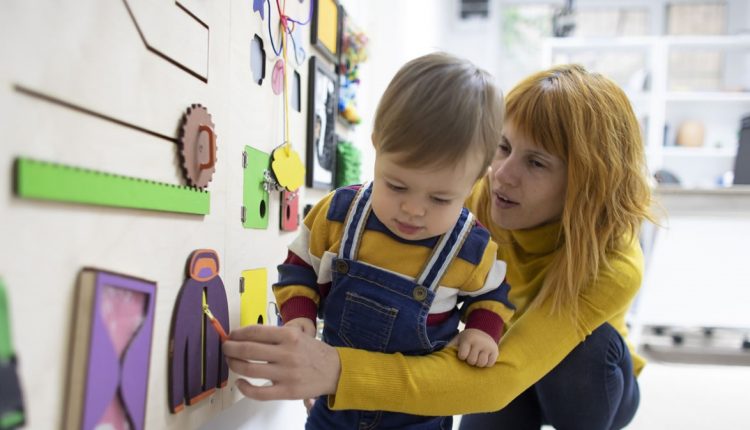
Autism, what do you know about autism spectrum disorders?
Autistic disorder (know also as infantile autism or childhood autism) almost always develops before the age of three and is characterized by impaired verbal and non-verbal communication, social interaction, some form of repetitive and restricted stereotyped interest, ritual, or other behavior
Let’s Talk About Autism
Children with autism often have extreme difficulty developing normal relationships with others.
They tend not to share in the interests their peers have. In many cases these children are not able to interpret non-verbal cues of communication like facial expressions.
Most people with autism have some impairment in language and many never speak at all.
About 8.7 of every 10,000 children are autistic, and more than 1 in 300 children have some form of pervasive developmental disorder (PDD).
CHILD HEALTH: LEARN MORE ABOUT MEDICHILD BY VISITING THE BOOTH AT EMERGENCY EXPO
PDD means that some, but not all, symptoms of autism are present
Autism is a lifelong disease that ranges in severity from mild cases in which the autistic person can live independently, to severe forms in which the patient requires social support and medical supervision throughout his or her life.
There are physical bases for autism’s development including genetic, infectious, and traumatic factors
Viral infection including rubella during the first trimester of pregnancy, have been studied as possible causes of autism.
Children with Fragile X syndrome or tuberous sclerosis have higher rates of autism than the general population.
Autism affects males four times more often than females, and there is a genetic basis for the disease.
Contrary to previous notions, autism is not caused by upbringing.
Symptoms
The symptoms vary greatly but follow a general pattern.
Not all symptoms are present in all autistic children.
Autistic infants may act relatively normal during their first few months of life before becoming less responsive to their parents and other stimuli.
They may have difficulty with feeding or toilet training; may not smile in recognition of their parents’ faces, and may put up resistance to being cuddled.
As they enter toddlerhood, it becomes increasingly apparent that these children have a world of their own.
They do not play with other children or toys in the normal manner, rather they remain aloof and prefer to play alone.
Parents often mention that their child is so undemanding that he or she is “too good”.
Verbal and nonverbal communication skills, such as speech and facial expressions, develop peculiarly.
Symptoms range from mutism to prolonged use of echoing or stilted language.
When language is present, it is often concrete, unimaginative, and immature.
Another symptom of autism is an extreme resistance to change of any kind
Autistic children tend to want to maintain established behavior patterns and a set environment.
They develop rituals in play, oppose change (such as moving furniture), and may become obsessed with one particular topic.
Other behavioral abnormalities that may be present are: staring at hands or flapping arms and hands, walking on tiptoe, rocking, tantrums, strange postures, unpredictable behavior and hyperactivity.
An autistic child has poor judgment and is therefore always at risk for danger. For instance, an autistic child may run into a busy street without any sign of fear.
Diagnosis
Properly diagnosing autism is very important, since confusion may result from inappropriate and ineffective treatment.
Deafness is often the first suspected diagnosis, since autistic children may not respond normally to sounds and often do not speak.
The children’s appearance and muscle coordination are often normal.
Occasionally, an autistic child has an outstanding skill (splinter skills), such as an incredible rote memory or musical ability
Such children may be referred to as “autistic savants”, and occur in almost 10% of cases of autism.
These skills can be quite astonishing.
One example is the ability to play a piece of music almost perfectly after hearing it one time.
Many children with autism have a second psychiatric disorder or a neurologic disorder.
Mental retardation and seizure disorders are very common in autistic children and a thorough neurologic and psychiatric evaluation is necessary in every case of autism to ensure all the child’s medical problems are being addressed.
Treatment
Appropriate early intervention is important.
Once the diagnosis has been made, the parents, physicians, and specialists should discuss what is best for the child.
In most cases, parents are encouraged to take care of the child at home.
Special education classes are available for autistic children.
Structured, behaviorally-based programs, geared to the patient’s developmental level have shown some promise.
Most behavioral treatment programs include:
- clear instructions to the child
- prompting to perform specific behaviors
- immediate praise and rewards for performing those behaviors
- a gradual increase in the complexity of reinforced behaviors
- definite distinctions of when and when not to perform the learned behaviors
Parents should be educated in behavioral techniques so they can participate in all aspects of the child’s care and treatment.
The more specialized instruction and behavior therapy the child receives, the more likely it is that the condition will improve.
Medication can be recommended to treat specific symptoms such as seizures, hyperactivity, extreme mood changes, or self-injurious behaviors.
The autistic child requires much of the parents’ attention, often affecting the other children in the family.
Counseling and support may be helpful for the parents.
The outlook for each child depends on his or her intelligence and language ability.
Some people with autism become independent adults.
A majority can be taught to live in community-based homes, although they may require supervision throughout adulthood.
Read Also:
Emergency Live Even More…Live: Download The New Free App Of Your Newspaper For IOS And Android
ADHD Or Autism? How To Distinguish Symptoms In Children
Autism, Autism Spectrum Disorders: Causes, Diagnosis And Treatment
Intermittent Explosive Disorder (IED): What It Is And How To Treat It
Management Of Mental Disorders In Italy: What Are ASOs And TSOs, And How Do Responders Act?
How Cognitive Behavioural Therapy Works: Key Points Of CBT
12 Essential Items To Have In Your DIY First Aid Kit
Anxiety: A Feeling Of Nervousness, Worry Or Restlessness
Hesitation When Driving: We Talk About Amaxophobia, The Fear Of Driving
Rescuer Safety: Rates Of PTSD (Post-Traumatic Stress Disorder) In Firefighters
Schizophrenia: Risks, Genetic Factors, Diagnosis And Treatment
Why Become A Mental Health First Aider: Discover This Figure From The Anglo-Saxon World
Attention Deficit Hyperactivity Disorder: What Worsens ADHD Symptoms
From Autism To Schizophrenia: The Role Of Neuroinflammation In Psychiatric Diseases
Does Your Child Suffer From Autism? The First Signs To Understand Him And How To Deal With Him




